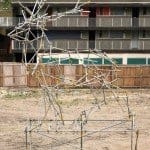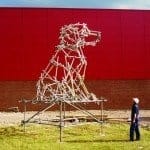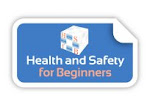Exemption certificate for persons working in mandatory safety helmet areas.
The company is pleased to announce that it has discovered a little known scheme where a person can be exempted from the wearing of a safety helmet. A person exempted under this scheme will designated as a ‘Hard Head’. A person who thinks that they can work safely in a designated hard hat area without wearing one can apply for an exemption certificate.
In order to qualify for this certificate the person must undergo a series of tests, in order to prove that their skull offers the same protection as the standard safety helmet. The test series is conducted three times. Whist the tests are the same in each series, each series will be preceded by a 24 hour conditioning period. Firstly your head will be kept at a constant 500C, for the second series it will be kept at -200C and for the third it will be submerged under water. For this part of the test series you will be responsible for supplying your own air.
Test 1. Shock Absorption Testing.
For this test your head will be held immobile whilst a 5kg hemispherical striker is dropped from a height of 1metre. The striking force when measured at the neck must not exceed 5kN. In order to successfully pass this part of the series there must be no destruction of the skull or any of its component parts.
Test 2. Penetration Test.
This test is also conducted with the head held immobile. A 3kg steel cylinder with a hardened point is dropped from a height of 1metre. The cylinder must not be able to penetrate far enough to cause damage.
Test 3. Flammability test.
A Bunsen burner flame shall be applied to the side of the head for a period of 10 seconds. After which your head must not have caught fire.
For those whose work may bring them into contact with electricity a set of further tests must also be passed.
Test 4. Current leakage.
This test is in to parts after conditioning in fresh water as described above. A probe will be placed at various points around your head. A second probe will be attached to you neck. Each time the first probe is placed on your head a charge of 1200v AC will be applied for 15 seconds. There should be no current leakage between the two probes.
This test is then repeated using saltwater as the conditioning agent.
Test 5. Conductivity
In this test two probes are placed at various points around your head no closer than 20mm. each the probes are placed a current of 1200v AC will be applied. There should be no current between the two probes.
Please note that if you have had your head metal electro-plated you will not be able to be put forward for tests 4 and 5.
If you are successful in passing all the above tests you will be issued with an exemption certificate which you will have to carry at all times. If you feel that such a program of tests might be too much for you complete you can always just wear a safety helmet instead. All safety helmets used by the company have to pass all of these tests in order to be given the CE mark.
Hard Hat Care.
In order to give the best service and preserve to capability of your hard hat here are a few suggestions to help.
1. Keep it clean. Wipe all parts over with a cloth moistened with a mild detergent, allow to air dry. Do not use aggressive cleaning solutions or try to force dry the hard hat.
2. Do not ever cut any ‘ventilation’ holes in your hard hat, they do not work and seriously weakens it.
3. Do not paint the solvents in paints attack and weaken the shell.
4. Don’t put anything inside the hard hat except your head. Do not use it to carry objects.
5. It will only give you full protection when worn correctly so don’t wear it back to front.
Common complaints.
“It’s to heavy” Hard hats on weight about 14 ounces and that’s only a few ounces more than a cloth cap, but compare the extra protection afforded by the hard hat.
“It’s to hot” Actual measurements taken during hot weather show that it is actually a lot cooler under a hard hat.
“Wearing one gives me a headache”. An object that has fallen some distance will give you a greater one.
“It won’t stay on.” That’s right it won’t in a high wind but the use of a chinstrap will ensure that it will stay on. Making sure your hard hat is properly adjusted to fit you correctly will also ensure that it stays on your head.
Your Hard Hat is for your protection but like any other piece of safety equipment unless you adjust it to fit and wear it correctly it will not give you the maximum protection.















